
2024 Nominations are now closed
About the Walk of Fame
In 2011, a plaque was placed outside the Museum of Kalgoorlie-Boulder, honouring Patrick Hannan, the man whose discovery of gold prompted Australia's most famous gold rush - right here in Kalgoorlie-Boulder.
Each year, more influential individuals join Patrick Hannan on the City's Walk of Fame, receiving recognition for the significant contribution they have made to Kalgoorlie-Boulder, as well as nationally or internationally.
Annually, the Walk of Fame Working Group will welcome at least one new inductee into the Walk of Fame, commemorated by the unveiling of their plaque. Nominations will open in approximately October/November each year, with an application form and additional information added to this page.
The Walk of Fame is located on the southern side of Hannan Street.
For more information regarding the Walk of Fame, please contact us on 9021 9600 or email mailbag@ckb.wa.gov.au.
Walk of Fame Inductees
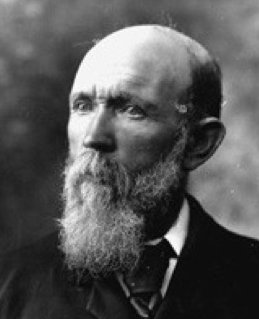
Patrick Hannan
Inducted: 2011
Location: 17 Hannan Street
Read More
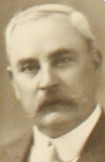
Sidney Edwin Hocking
Inducted: 2012
Location: 25 Hannan Street
Read More
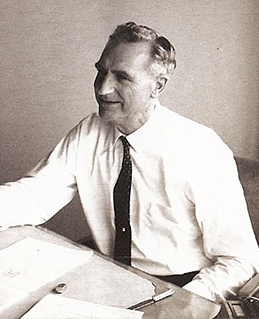
Dr Charles Harold Warman, OAM
Inducted: 2012
Location: 25 Hannan Street
Read More
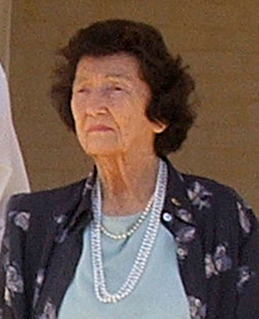
Mrs Lorna Mitchell, MBE OAM JP
Inducted: 2013
Location: 49 Hannan Street
Read More
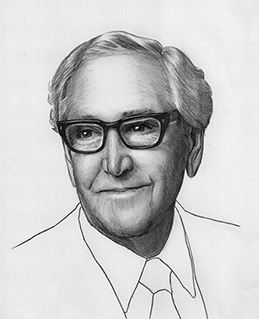
Sir Laurence Brodie-Hall, AO CMG
Inducted: 2013
Location: 51 Hannan Street
Read More
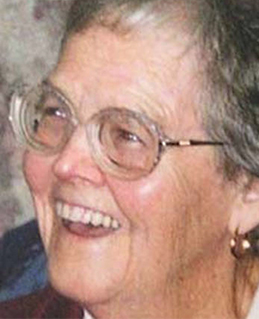
Mrs Norma King, OAM
Inducted: 2014
Location: 71 Hannan Street
Read More
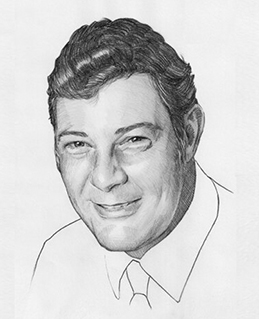
Emeritus Professor Odwyn Jones, OAM
Inducted: 2015
Location: 75 Hannan Street
Read More
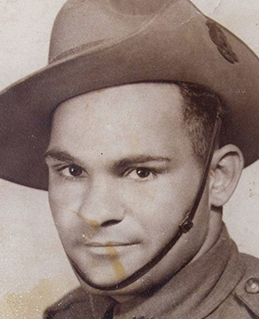
James (Jim) Brennan, OAM
Inducted: 2016
Location: 85 Hannan Street
Read More
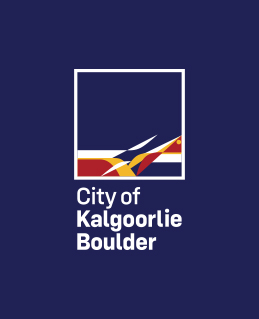
Samuel William Pearce & William George Brookman
Inducted: 2017
Location: 89 Hannan Street
Read More

Ross Rogers
Inducted: 2017
Location: 97 Hannan Street
Read More
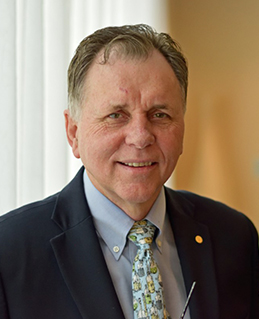
Professor Barry Marshall AC
Inducted: 2017
Location: 107 Hannan Street
Read More

Charles Cooke Hunt
Inducted: 2017
Location: 117 Hannan Street
Read More
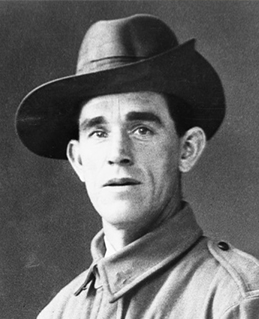
Thomas Leslie Axford, VC
Inducted: 2018
Location: 127 Hannan Street
Read More
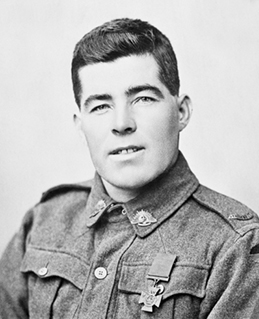
John Carroll, VC
Inducted: 2018
Location: 135 Hannan Street
Read More
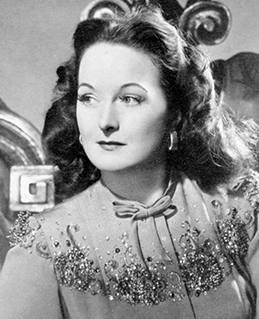
Eileen Joyce
Inducted: 2018
Location:
Read More
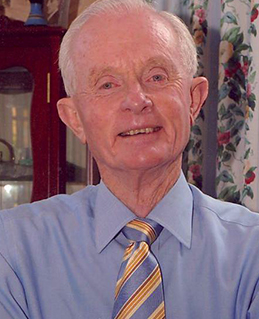
Dr Roy Woodall, AO
Inducted: 2018
Location: 143 Hannan Street
Read More
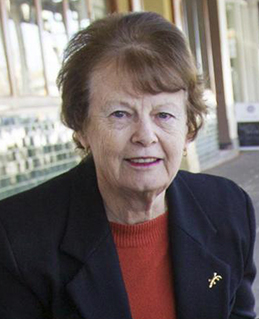
Patricia Ann Leighton
Inducted: 2018
Location: 147 Hannan Street
Read More
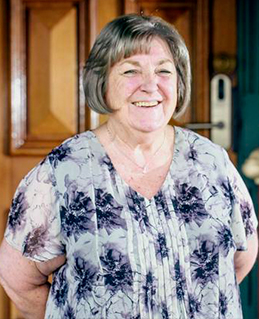
Mrs Esther Roadnight, OAM
Inducted: 2018
Location: 155 Hannan Street
Read More

Sir Richard Moore, OBE
Inducted: 2019
Location: 159 Hannan Street
Read More
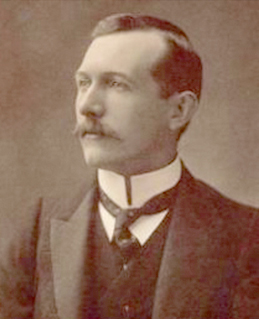
Sir John Kirwan KCMG
Inducted: 2019
Location: 189 Hannan Street
Read More
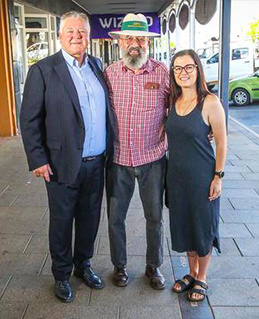
Dr Keith (Barney) McCallum
Inducted: 2020
Location: 193 Hannan Street
Read More
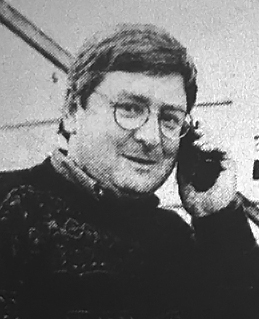
Geoffrey James Stokes
Inducted: 2020
Location: 137 Hannan Street
Read More

Maitland Keith Quartermaine OAM
Inducted: 2021
Location: 205 Hannan Street
Read More

Jack Tinetti
Inducted: 2021
Location: 211 Hannan Street
Read More
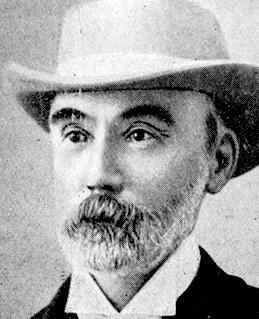
C.Y O'Connor CMG
Inducted: 2021
Location: 217 Hannan Street
Read More

William George Liddicoat
Inducted: 2022
Location:
Read More

Tess Thompson
Inducted: 2022
Location:
Read More
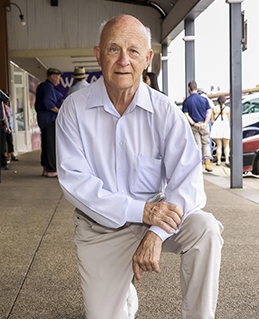
Douglas Daws OAM JP
Inducted: 2023
Location:
Read More

Alfred Barwick JP
Inducted: 2023
Location:
Read More
Patrick Hannan
Inducted: 2011
Location: 17 Hannan Street
Patrick Hannan, along with Dan Shea and Tom Flanagan found gold near Mount Charlotte in June 1893. This find started the gold rush to, what became known as Hannan’s, and laid the foundations of the City of Kalgoorlie-Boulder.
Hannan had been prospecting in WA for many years and joined the rush to Coolgardie. It was from Coolgardie that Hannan, Flanagan and Shea, all Irishmen, left to go to Mount Yule following a prospecting party that left the day before. The party made it to what is now National Route 94 along Outridge Terrace where they found gold in a gully of a low range of hills.
He was the youngest in his prospecting party being 53 years old at the time and was therefore tasked with riding his horse to Coolgardie to make the claim.
That find started the rush to what became Kalgoorlie. He stayed on the goldfields for about 6 months prospecting before moving on. Hannan came back to Kalgoorlie in 1898 for a week or so, then left and never returned.
Image source: Wikipedia.org
Sidney Edwin Hocking
Inducted: 2012
Location: 25 Hannan Street
In 1895 Sidney Hocking published Kalgoorlie-Boulder’s first daily newspaper, the ‘Kalgoorlie Miner’ and launched ‘Hocking & Co’ in 1896. Both the paper and company have become synonymous with Kalgoorlie-Boulder and continue to operate today.
Sidney Edwin Hocking (1859-1935), newspaper proprietor, was born on 24 December 1859 in Nairne, South Australia. The son of Nicholas Hocking, a blacksmith, and his wife Sarah, née Shore. Educated at Prince Alfred College, he joined the Adelaide Advertiser in 1874 as a general reporter and became the paper's mining writer at the Teetulpa goldfield, Baker's Creek and Hillgrove.
In 1889 he went to the new mining field at Broken Hill, New South Wales, as representative for a syndicate of evening papers in Melbourne and Sydney. Leaving Broken Hill in 1893, he arrived in Coolgardie, Western Australia where he sent articles to the Adelaide Advertiser and Register, the Melbourne Age and Argus and the West Australian. With James MacCallum Smith, and later joined by his brother Percy, he floated a company to publish the weekly Goldfields Courier, which he edited, and the daily Golden Age. He also ran a stationer's and newsagent's business and speculated in town lots.
When the new Kalgoorlie goldfield began to drain the life from Coolgardie, Hocking inspected the fabulous 'Golden Mile' and decided that its future was assured. He and his partners sold the Coolgardie company and in August 1895 Hocking bought the weekly Kalgoorlie Western Argus, founded by Mott Bros., the previous November. After buying an up-to-date plant, Hocking also launched the daily Kalgoorlie Miner. He temporarily employed (Sir) Hal Colebatch as editor and, in Adelaide, recruited (Sir) John Kirwan.
In 1896 he launched Hocking & Co. Ltd with himself, Percy, another brother Ernest, Kirwan and their printer W. W. Willcock as shareholders. Hocking became mining editor, leaving the business management of the two papers and an associated stationery and job-printing house to Percy, and the editorial management to Kirwan. When Percy died in 1900, Hocking took over the commercial side and Kirwan, when he became too deeply involved in politics, was replaced by Edward Hamilton Irving who managed the paper until his death in 1929.
Hocking shared a house with his sister Emma until his marriage on 15 August 1900 to 21- year-old Effie Fenn; they had eight children. For many years he stood as chairman of the Kalgoorlie Racing Club and president of the Kalgoorlie Chamber of Commerce, he was also almost permanent president of the Fresh Air League, which sent Goldfield's children for seaside holidays. He was an enthusiastic gardener, who is said to have planted the first of Kalgoorlie's many peppercorn trees, and in his later years he enjoyed golf. His reputation as a good boss was valuable in a town like Kalgoorlie, dominated by the democratic ethos; the accepted legend that he had never sacked a man was not true, but he was certainly remarkably lenient.
In 1895, and from 1907, he served on the Kalgoorlie Municipal Council and was mayor from 1909-10. Modest and intensely domestic, however, he generally shunned the limelight. He left Kalgoorlie rarely and only travelled twice overseas, first in 1899, when he purchased a modern newspaper plant, and in 1930 when he was a delegate to the Imperial Press Conference in London. In an endeavour to keep his newspapers unbiased, he avoided political involvement.
Hocking died on 29 January 1935 during a heat wave and was buried in Kalgoorlie Cemetery. His estate, valued for probate at £54,769 in Western Australia and Victoria, was left to his family, all of whom survived him. Three of his sons became directors of Hocking & Co. Ltd.
Image source: stateheritage.wa.gov.au
Dr Charles Harold Warman, OAM
Announced: 2012
Location: 25 Hannan Street
Born in Kalgoorlie, Charles Warman invented and manufactured the Warman Slurry Pump, with innovations that greatly improved the efficiency of slurry pumps worldwide and which have been used in the mining industry for over 50 years.
Dr Charles Harold Warman was born in Kalgoorlie, Australia in 1910. At 14 years of age, Warman won a scholarship to attend the Western Australian School of Mines where he graduated in 1931.
In the early 1930s, he worked as a draftsman in Kalgoorlie, Western Australia. He saw that some improvements in slurry pump technology were needed and set out to improve the designs. By 1938, he had made several improvements to slurry pump design and had taken out patents on these ideas. He improved the seal so that it was simple and required little maintenance. He introduced rubber lining which could be replaced easily. The pumps were manufactured and marketed in Kalgoorlie until 1955, when they accounted for about 90% of the Western Australian market.
Warman continued to improve the pump design. His company released a new generation of pumps in 1950 and again in 1962. In the late 1950s, the company moved to Sydney and built a new factory in Artarmon. A factory opened in North America in the early 1960s and in 1969 the company was taken over by a large mining group. At the end of the century, Warman International had its main office in Sydney along with its manufacturing, marketing and distribution facilities. Warman-designed pumps were being manufactured in the USA, UK and Brazil, and there were licensees in Japan, China, the Philippines and India. There was a sales office in nearly every country in the world.
A graduate and past lecturer at Curtin University of Technology’s Western Australian School of Mines (WASM), Dr Warman was one of WAMS’s most accomplished graduates and was named by Engineers Australia as one of the top ten Australian Engineers of the 20th century. He was inducted into the Australian Prospectors and Miners Hall of Fame on 23 October 2009 and was recognised for his extraordinary and unique lifelong contribution to the Australian minerals industry by being awarded an Honorary Doctorate of Science in 1983. He was also awarded an Order of Australia for service to engineering, the mining industry and the community.
Just as significant, he also played an important role in the early days of the development of iron ore mining in Western Australia by helping to develop the Mt Newman Iron Ore operations.
Dr Warman also established MD Research in Sydney in 1969, where he supported and contributed to education, postgraduate scholarships, student competitions and infrastructure development.
DR Warman passed away on 11 July 2008, aged 98.
Image source: Kalgoorlie Miner
Mrs Lorna Mitchell, MBE OAM JP
Announced: 2013
Location: 49 Hannan Street
Mrs Lorna Mitchell MBE OAM JP was nominated for her significant and positive contribution to the community of Kalgoorlie-Boulder for nearly 80 years by the Goldfields Repertory Club. Her acceptance to the Walk of Fame acknowledges her lifelong commitment to her service to Kalgoorlie-Boulder through her work with children's education, community service and charitable organisations.
Lorna Mitchell was the first female elected to the Town of Kalgoorlie Council, where she served for 20 years. She also served many charitable and community organisations in our City throughout her life. These include but are not limited to:
- Goldfields Aged Care
- The Arts Board
- The Muscular Dystrophy Association
- The Women’s Refuge
- The Red Cross
- Goldfields Childcare Centre
- Instigating and coordinating the Spring Festival
- The Goldfields Repertory Club where she served as President for 29 years
Mrs Mitchell also made an outstanding contribution to the education of children with disabilities. In 1951, she became the Headmistress of the Boulder Special Education Centre where she served for over 20 years. She has also been a long serving Justice of Peace.
Mrs Mitchell’s contribution to the City of Kalgoorlie-Boulder is widely acknowledged and she has received many awards and honours including:
- The British Empire Medal for Community Service in 1967
- Western Australian Woman of the Year in 1975
- The Order of Australia Medal in 1995
- Freeman of the City of Kalgoorlie-Boulder in 2007
Sir Laurence Brodie-Hall, AO CMG
Announced: 2013
Location: 51 Hannan Street
Sir Laurence Brodie-Hall was an influential figure in Western Australia’s mining industry and a strong advocate of mining education and the promotion of the WA School of Mines.
Laurence Brodie-Hall (Brodie) was born in London in 1910 and migrated to Australia in 1924 where he worked as a farmhand in NSW before venturing to Western Australia in 1937. He and a friend bought a garage business but went broke during the Depression. He then went gold mining in Murchison, Victoria where he began at the very bottom – as an underground miner. He enjoyed the social life in the Goldfields where he engaged in amateur theatricals, played the violin and sang- much to the delight of his many friends.
In 1934 Brodie joined Western Mining Corporation’s (WMC) Triton mine near Cue as a machine miner. From there, he went to Kalgoorlie and took a shift job at the Kalgurli Ore Treatment Company’s plant and began a part- time course at the WA School of Mines. Next, he went to work at the Emperor in Fiji in 1939, but when WWII broke out, he returned to WA and worked as a plant superintendent on Claude de Bernales’ Bailey Mine in Coolgardie. When Japan entered the war, Brodie enlisted as a sapper as part of the Royal Australian Engineers and by the end of the war he had risen to the rank of Captain in the 2/2nd Mechanical Equipment Company.
When demobilised he returned to Kalgoorlie and completed Mining and Metallurgy Diplomas at the WA School of Mines under the Commonwealth Rehabilitation Scheme. In 1948 WMC’s Managing Director, Sir Lindsay Clark offered him a job as Junior Mine Geologist in Norseman. This move was short-lived as he relocated to Melbourne as Technical Assistant to Sir Lindsay Clark.
In June 1951, after having worked on proposals to re-establish gold mining in Bullfinch, a small town in the eastern Wheatbelt region of Western Australia, Brodie was appointed General Superintendent of Great Western Consolidated. For the next seven years he worked in Bullfinch where his reputation for technical innovation and good management was established. Unfortunately, the combination of high inflation and below-expected grade resulted in financial disaster for the company.
In 1958 Brodie was promoted to WMC’s General Superintendent in WA, and in 1962 he became an Executive Director. In this role, he directed the considerable broadening of WMC’s operations including the major expansion of Gold Mines of Kalgoorlie, the re-opening of the Mount Charlotte Mine, and the formations of Three Springs Talc and Alcoa of Australia. He was directly involved in a long-term contract with Japan in March 1966. It was due to his encouragement and support that WMC discovered nickel sulphides in Kambalda in January 1966. The rapid establishment of Kambalda Nickel Operations in 1967, the Kwinana Nickel Refinery in 1970 and the Kalgoorlie Nickel Smelter in 1972 were among his major achievements.
In 1967 Brodie moved to Perth where he involved himself in industry and community affairs. He was President of the WA Chambers of Mines from 1970-1974, a member of the Australian Mining Industry Council and President of the Australian Institute of Mining and Metallurgy in 1973. He was awarded the Institute Medal in 1976 and Hon Life Membership in 1988. He served in many government and advisory bodies including the WA Environmental Protection Council, the CSIRO Council and was Chairman of the State Committee of CSIRO for many years. He received the WA Citizen of the Year Award in 1974 and was made a Companion of the Order of Australia (AO) in the Australia Day Honours in 1993 in recognition of his significant contribution to the mining industry in Australia.
Following his retirement as an Executive Director of WMC in 1975, Brodie remained on the board of WMC and Alcoa of Australia for a further seven years. He was Chairman of Kalgoorlie Lake View Pty. Ltd., Kalgoorlie Mining Associates, Central Norseman Gold Cooperation NL., and Three Springs Talc until 1982 and Gold Mines of Kalgoorlie Ltd., until 1985. He never lost faith in gold and worked tirelessly to maintain viable gold mining operations in Norseman and Kalgoorlie against falling prices, rising costs and occasionally, pessimistic shareholders. Outside the WMC Group, Brodie was Chairman of Westerntech Innovations Corp., Energy Research Group (ERG), and a Director of Coolgardie Gold NL among other enterprises.
For many years Brodie maintained a keen interest in the WA School of Mines and was Chairman of the school’s Board of Management for a long period. He devoted himself to raising both the status of the school and a considerable amount of money to provide for its further development. He also served on the Council of the Western Australian Institute of Technology (now known as Curtin University) and received an Honorary Doctorate of Technology from them in 1978. He was appointed a Fellow of Curtin University for his many years of service to tertiary education. His contribution is celebrated in the L C Brodie-Hall Administration Centre at Agricola College Kalgoorlie, the Brodie-Hall Research and Consultancy Centre at Curtin University and Brodie-Hall Drive in Technology Park at Curtin University.
When receiving the AusIMM Institute Medal in 1976 Brodie remarked, ‘the citation could in time be paraphrased to make an appropriate epitaph which would proclaim, the success he achieved, he owed to the mining industry, education and the community.’ Brodie was interested not only in academic qualifications but also in the personal development of individuals and there are many in the industry today ready to acknowledge the help, guidance and encouragement given to them by ‘the man who made it from the bottom to the top’ without losing the human touch.
Brodie married Dorothy Jolly who supported him and their young family while he was studying geology at the Kalgoorlie School of Mines. They had 5 children.
He died in 2006.
Image source: Curtin University
Mrs Norma King, OAM
Announced: 2014
Location: 71 Hannan Street
As a respected author and historian, Mrs Norma King‘s published works on the history of the Goldfields are a tribute to our past and a legacy for future generations.
Mrs Norma King was nominated by the Eastern Goldfields Historical Society for her tremendous contribution to the recording and documenting of the Western Australia Goldfields history.
Published work include the following:
Booklets
- 1972 The Corroboree
- 1973 Bushrangers on the Burbanks Road
- 1973 The fabulous Golden Mile
- 1973 Ghost Towns of the North Country
- 1975 Early days around Coolgardie
- 1976 Rushes and Finds Near Old Kambalda
- 1976 When Hannan Street was Young
Books
- 1972 Nickel Country-Gold Country
- 1980 Colourful Tales of the Western Australian Goldfields
- 1988 The Daughters of Midas
- 1992 Wings over the Goldfields: The 50 year history of the Eastern Goldfields section of the Royal Flying Doctors Service
- 1995 The Voice of the Goldfields: 100 years of the Kalgoorlie Miner
- 1996 The Hannans Club: The first 100 years
Autobiography
- 2003 Then they called me Norma. Following Norma’s retirement to Fremantle, she wrote and published her own biography.
Articles
In the 1970s, Norma wrote countless historical articles for the Kalgoorlie Miner, and continued to do so for a further 25 years. Bound copies of these articles are held in the library of the Eastern Goldfields Historical Society. Norma was a Life Member of:
- WA section of the Fellowship of Australian Writers
- The Eastern Goldfields Historical Society
- The Golden Mile Art Group
Image source: ABC
Emeritus Professor Odwyn Jones, OAM
Announced: 2015
Location: 75 Hannan Street
Emeritus Professor Ifan Odwyn Jones was the Resident Director of the Western Australian School of Mines from 1976-1991 and was a strong advocate for the campus to remain in Kalgoorlie.
He was also Principal of the WA School of Mines in Kalgoorlie and Dean of Mining and Mineral Technology at Curtin University of Technology for 15 years, during a period of outstanding development and resurgence of the Kalgoorlie Campus.
Thereafter he became Director of University Development (International) and Directory of the Brodie-Hall Research and Consultancy Centre for a further 4 years before retirement. He is a long-standing member of the Minerals and Energy Research Institute of WA (MERWA) and is currently Chairman of its Minerals Research Advisory Committee.
During his time, Jones was instrumental in fighting attempts to relocate the school from the Goldfields to Perth. The Whitlam Government spent heavily on education in its term of government. This spending was severely curtailed by the next (Frazer) Government and funding was progressively diminished. This resulted in the Federal Government attempting to reorganise the tertiary education system and it was proposed that the School of Mines should be in a federated association with the Eastern Goldfields Technical College. This was fought for five years, until 1982, when the proposal was abandoned, and the School of Mines was left with the WA Institute of Technology, and given increased autonomy, with its own Board of Management.
- Jones was awarded the Order of Australia (OAM) medal for service to the mining industry and to the Kalgoorlie-Boulder community
- Chairman, Minerals Research Advisory Committee, Minerals and Energy Research Institute of Western Australia, since 1998, Deputy Chairman, 1983-1998; Scholarship Student Awards Committee, since 1998; Ministerial Appointee, since 1981
- Chairman, Advisory Boards, Central TAFE, 1996-2001
- Chairman, Board of Directors, Resources Information Unit Ltd, 1986-1992
- Director, Kalgurli Mines Ltd, 1985-1989
- Member, Selection Panel, State Government Science and Innovation Studentship Awards 2004-2005
- National Vice President, Australasian Institute of Mining and Metallurgy, 1994; National Councillor, 1991-1994; Chairman, Eastern Goldfields Branch, 1990; Fellow
- Chairman, Mining Metallurgical and Materials Engineering Panel, Institute of Engineers Australia, 1984-1987; Accreditation Board Member, 1984-1987
- Fellow, Institute of Mining and Metallurgy, UK
- Member, Federal Government Trade Mission to China, 1993
- Member, Western Australian Government Trade Missions to Iran, 1992 and 1994
- Consultant to Government agencies in Thailand, Papua New Guinea and Iran regarding proposed education programs, 1992-1993
- Member, IDP Education Australia Mission assessing the need for Australian educational services in Kuwait, 1992
- Member, Joint Australian-Indonesian Postgraduate Selection Committee, Australian International Development Assistance Bureau, 1984-1985 and 1990; other programs in the Indonesian Mining and Energy Sector 1989, and in Burma 1987
- President, Welsh Society of Western Australia Inc
- Vice-President, Perth’s Welsh Free Church
- Past Chairman, Property and Finance Committee, Como Uniting Church
- Committee Member, Christian Men’s Association
- Past Vice-President and Committee Member, Australian-Britain Society (WA Branch)
- Council Member, Eastern Goldfields Branch, Royal Flying Doctors Service, 1990- 1991
Awards and recognitions include;
- Curtin University Fellowship Award, 2017
- Order of Australia Medal, 2006
- ‘Odwyn Jones Mining and Surveying Building’ at the WA School of Mines, Curtin University of Technology, was named in his honour, 2004
- Emeritus Professorship, Curtin University of Technology, 1995
- Gold Bicentennial Medal, Graduates Association of the WA Scholl of Mines, 1988
- Citizen of the Goldfields, 1978
Image source: Curtin University
James (Jim) Brennan, OAM
Announced: 2016
Location: 85 Hannan Street
James (Jim) Brennan, OAM was born in Laverton in 1917. He was smuggled up a creek amidst a confrontation, in which his mother lost her life. Jim was in the care of his aunt before being given to a blacksmith named James Brennan, who gave him his name. He was brought up by his adoptive parents until 1925 when he was removed by authorities and taken to the Moore River Native Settlement, later known as Mogumber Mission, located135 kms northeast of Perth, Western Australia.
Jim left Moore River in 1932 and took to the saddle as a stockman and worked on various pastoral stations in the northern Goldfields including Earlistoun, Tarmoola and Wogarno. Then an inspector and magistrate known as Dr Davis appointed Jim as his assistant and the young man gained a first-hand, intimate knowledge of the shocking conditions other Aboriginal people endured across the state.
In August 1940, at aged 22, Jim enlisted in the army and was among those shipped out to the Middle East to fight in World War II. As one of the Rats of Tobruk, he was part of the group of besieged Australian forces who held the Libyan port against the German-Italian forces. Jim was in the West Australian 2/28th Battalion. On the night of 26 July 1942, during the first battle of El Alamein in Egypt, at a place called Ruin Ridge, he was taken prisoner by German-Italian forces.
From there, he was sent to a prisoner-of-war camp in northern Italy where he learned to speak Italian. When Italy surrendered, he escaped and fought with the partisans, an elite guerrilla unit targeting Nazi troops. Jim was recaptured in 1945 by the Germans, and it was not until later that year he was released and returned to the WA Goldfields. Although he was glad to be returning home, Jim faced racial discrimination, as many endured during this time.
Once back in the Goldfields, Jim married Myrtle, née Goodilyer, and began working at Leonora's Sons of Gwalia Mine, where he would work for almost two decades. It was at this time; his knowledge of Italian came in handy as he was working with many Italian miners and was able to translate for them when they didn’t understand English. During this time, he fought for his papers, earning him the right to live in town, but limiting his access to his family.
Jim was active in Aboriginal welfare in the region from 1945 until his death. He formed the Eastern Goldfields Native Centre in 1965 and was President until 1971. He was chairman of the Aboriginal Council, Aboriginal Consultative Committee and Aboriginal Advisory Council in Kalgoorlie. He was also called upon to defend the rights of the Aboriginal community against local prospectors whose intention was to mine known sacred sites.
He fought for and gained many liberties for the Aboriginal people before the 1967 referendum, which was a major leap towards abolishing different laws for Aboriginal people and other races. He believed all those that fought for Australia in a time of war should have the same rights as everyone else and not be penalised because of their race.
Many Aboriginal organisations that still exist are due to the activities of James (Jim) Brennan in the latter part of the 20th Century. In 1984, Jim was awarded the “Medal of the Order of Australia” (OAM), in recognition of service to Aboriginal welfare. The Parkeston Aboriginal Complex which was opened in 1982 was named Ninga Mia in honour of James Brennan in 1983. Jim Brennan passed away on the eve of a new millennium in December 2000 after leading a personal crusade to improve the lives of other indigenous Australians.
Image source: ABC
Samuel William Pearce & William George Brookman
Announced: 2017
Location: 89 Hannan Street
Mr Pearce and Mr Brookman were key contributors to the region’s mining industry. As prospecting partners, they developed the gold mines of the Golden Mile.
Samuel William Pearce
Pearce, a prospector with a “nose for gold” was the second member of the Adelaide Prospecting Party to travel to the Eastern Goldfields. Exploring south of 'Hannans Find', a name coined to the area Patrick Hannan discovered gold, through dense bush, he found first the Ivanhoe, then the 34 acres of the Great Boulder. He endured the hardships of water restriction and the hazard of aboriginal groups passing through to peg that extremely valuable property and a large number of leases incorporated into the Coolgardie Mining and Prospecting Company, successor to the syndicate. These included the Boulder East, Lake View, Adelaide North, South and East (Associated), the Royal Mint, the Iron Duke, the Iron Monarch and several others. He perceived the value of Cammilleri’s extraction of gold from the unlikely porphyry rock, influencing him to peg the large number of leases which allowed the company to dominate the Golden Mile. This then became a major source of income for the state at the time. Pearce’s experience in African, American and Australian Goldfields gave him the ability to discern the value of the Golden Mile rocks, whereas others had smaller and less significant claims. When the company was sold, he returned to single prospecting and eventually retired to some properties near Northam.
William George Brookman
Brookman arrived in the Eastern Goldfields alongside Pearce as partners with a mission to find gold. Together, they explored south of Hannans Find, and while Pearce sourced the gold-bearing areas, Brookman made the claims. Brookman was the business head. He would organise the financing, orchestrate gold sales, plan and execute underground mine production and the search and purchase of machinery and equipment required. He spun a £150 syndicate into £30 million set of operations (1950s valuation) and made the Golden Mile into a massive underground operation of many mines including, the Ivanhoe, Great Boulder, Bank of England, Lake View Consols, and the Kalgoorlie Mint. He was ridiculed by others for the initial extensive 34 acres of Brookman’s Sheep Run but he soon silenced his critics as he made the Golden Mile the powerhouse of Western Australia. London beckoned and he floated a number of companies on the English stock exchange before returning to Western Australia. He had been elected to the Legislative Council in absentia and was also elected Mayor of Perth but retired after 8 months. He then settled in Mandurah.
Image source: Eastern Goldfields Historical Society
Ross Rogers
Announced: 2017
Location: 97 Hannan Street
Ross Rogers made many contributions to the community and quality of life in Kalgoorlie-Boulder and was a passionate advocate for tourism, heritage, arts and culture in our City.
Born 17 August 1924 in Subiaco, Western Australia, he arrived in Kalgoorlie on Christmas Day 1949. He married Dora Celia Hays on 19 April 1958 at the Wesley Church Kalgoorlie, and the couple had four children.
Contributions
- Goldfields Repertory Club Vice President and House Manager for many years. Involved in the production of 67 plays by hand-painting walls and proscenium over 1953.
- Co-Founder Goldfields Medical Fund 1953
- Founder of Goldfields Dispensing Fund 1951
- Formed Saints Badminton Club 1962
- Organised Big Beat Dances – proceeds for Railway Bowling Club
- Stood for Mayor against Bert Hammond and Harry Eade
- Formed “Young Liberals" 1961 – with Peter Browne (Federal Member for Kalgoorlie)
- Concerts organised in Caledonian Hall
- President and Life Member – Kalgoorlie Chamber of Commerce (member 1950-1995)
- Managed M Kelly Ltd chemists for 47 years
- Formed Kalgoorlie-Boulder Development Commission now G.R.D.A.C.-Goldfields Regional development
- Founder/Chairman Goldfields Regional Education Council 1971
- Initiated the School of Mines Advisory Committee – Technical School (now Kalgoorlie-TAFE W.A. Central Regional)
- Founder/Chairman – Goldfields Travel Association
Professor Barry Marshall
Announced: 2017
Location: 107 Hannan Street
Professor Barry Marshall was awarded the Nobel Prize for Medicine in 2005 for his groundbreaking research with long-term collaborator, Robin Warren, AC into the bacterium Helicobacter pylori and its role in peptic ulcer disease.
Born in Kalgoorlie on 30 September 1951, Marshall spent his early years both in Kalgoorlie and Carnarvon, before moving to Perth at the age of seven. He attended Newman College and the University of Western Australia, where he received a Bachelor of Medicine and Surgery in 1975.
Marshall is known around the world for his discoveries regarding the cause of peptic ulcers. His bold self-experimentation led to a complete change in treatment of the condition worldwide.
Beyond his Nobel Prize recognition, Marshall also received further recognition including:
- Warren Alpert Prize, 1994
- The Australian Medical Association Award and the Albert Lasker Award for Clinical Medical Research in 1995
- The Gardiner Foundation International Award, 1996
- The Paul Ehrlich and Ludwig Darmstaedter Prize, 1997
- The Golden Plate Aware of the American Academy of Achievement, 1998
- The Dr A.H Heineken Prize for Medicine, 1998
- The Florey Medal, 1998
- The Buchanan Medal of the Royal Society, 1998
Image source: Vice.com
Charles Cooke Hunt
Announced: 2017
Location: 117 Hannan Street
Charles Cooke Hunt mapped the area now known as the Eastern Goldfields, from 1864-1866. ‘Hunt's Track’, with its life-giving watering points spaced along its route, allowed prospectors and explorers to travel into the heart of the Eastern Goldfields.
Hunt's track observations and water points assisted in the discovery of the mineral fields of the Eastern Goldfields by the prospectors who followed his track much later. His track and wells allowed the prospectors to remain in the area and to retreat to these water points in order to survive.
Hunt's explorations played a critical role in the ultimate discovery of gold in Kalgoorlie-Boulder. Rumours of the discovery of gold by convicts within his party also fuelled an expectation of gold being discovered in the Hampton Plains. Indeed, Hunt himself blazed a Kurrajong tree on the very outcrop of the mineralised lode of what was to become a significant gold mine called “The White Hope”, confirming Hunt as the first to recognise mineralisation occurring in the Eastern Goldfields. (Reference: Scott W Wilson “Historic trip to the Hampton Plains Block 48 & 50”)
2016 marked the 150th Anniversary of his final expedition.
Henry Maxwell Lefroy was the only non-Aboriginal person who had been in the area earlier than Hunt in 1863. While Lefroy’s visit predates Hunt, Lefroy did not leave the legacy of strategic watering points and a cleared route for others to follow.
Hunt's Track was instrumental to the survival of those who followed his path. The decade from the discovery of gold in the Yilgarn at Eeunin in 1887 until the arrival of the railway in Kalgoorlie in 1896 marks the period of the greatest utilisation of Hunt's Track and the reliance on its watering points. It would be fair to say that lives would have been lost without these wells.
Hunt's favourable reports on the pastoral prospects of the Hampton Plains area (an area extending eastward from present-day Coolgardie) led to the Hampton Plains Syndicate (Hampton Land and Railway Syndicate) being formed and the ultimate purchase of various allotments of land from the government for considerable revenue to the state.
The people of Kalgoorlie-Boulder owe immense gratitude to Hunt and his team for the establishment of these watering points, and the detailed maps and reports of the conditions of the area he pioneered. These allowed the first prospectors such as Paddy Hannan and Bailey and Ford etc to penetrate into this region, changing the fate for us all. Hunt made a very significant and positive contribution to the people of Kalgoorlie-Boulder by blazing the track and digging watering points for others to follow. His interaction and engagement with Aboriginal people were commendable and uncontentious.
Charles Cooke Hunt died at a relatively young age of 35 and is buried at Apex Park in Geraldton, in what is believed to be an unmarked grave.
His diaries document many years of service and hardship that affected his health – but greatly benefited this region.
Thomas Leslie Axford, VC
Announced: 2018
Location: 127 Hannan Street
Thomas Leslie (Jack) Axford enlisted in the Australian Imperial Force (AIF) from Kalgoorlie. He was awarded the Military Medal during WWI as well as the Victoria Cross for his gallantry and initiative at the battle of Hamel.
Walter and Margaret Axford welcomed Thomas Leslie Axford into the world on 18 June 1894. Born in Carrieton, South Australia, the family moved to Coolgardie when Axford was two years old, where he attended Coolgardie State School. He was employed at Boulder City Brewery Co. Ltd. While living in Bourke Street in 1915, Axford enlisted in the Australian Imperial Force (AIF).
In March 1916 he joined the 16th Battalion in Egypt, then arrived in France in June. The Battalion attacked near Pozieres on 9 August 1916. Axford was evacuated with shellshock on 11 August but quickly re-joined his unit. A year later he suffered a shrapnel wound to his knee, which was treated in England. He once again returned to his unit.
The 16th Battalion were part of the 4th Brigade, which in April and May 1918, stopped a German offensive in Hebuterne, France, after which Axford was awarded the Military Medal.
During the Battle of Hamel in July 1918, Axford was credited with killing ten enemy soldiers and capturing a further six. Axford’s gallantry and initiative in the battle won him the Victorian Cross, the highest honoured award of wartime.
Of his actions he later commented, “I must have been mad."
Axford was promoted to Corporal in July 1918.
His Victorian Cross was gazetted on 17 August 1918, only nine days before his father died. Only several months later, he returned to Australia and was discharged from service in February 1919.
Axford returned to live in Kalgoorlie, where he married Lily Foster on 27 November 1926. The couple had two sons and three daughters.
His dedication to the Australian Army didn't end there as in June 1941 he was mobilised in the Militia, and posted to the District Records Office in Perth, Western Australia.
He was promoted to Sergeant in 1943, where he held this title until his discharge in April 1947.
He attended the Victorian Cross Centenary Celebrations in London in 1956.
While returning home to Australia from a reunion of the Victorian Cross and George Cross Association in London in 1983, Axford died.
He was cremated with Military Honours at Karrakatta Cemetery in Perth. His wife predeceased him by three months.
Recognitions
- The Military Cross
- The Victoria Cross
- A ward at Repatriation General Hospital, Hollywood, was named in his honour
- Axford Park in Mount Hawthorn is named Thomas Axford, as he had lived in Mount Hawthorn
- A plaque in his memory was erected on South Western Highway, near Kirup, as part of the Commemoration Way Project
Image source: Australian War Memorial
John Carroll, VC
Announced: 2018
Location: 135 Hannan Street
John Carroll was born on 16 August 1891 in Brisbane, Queensland, welcomed by his parents John and Catherine Carroll.
At two years old, his family moved to Donnybrook, Western Australia, before moving north to Yarloop. In the early 1900's, the family settled in Kurrawang, where he and his father worked for the Goldfields Firewood Supply Co. Carroll was a good athlete and a prominent member of the local football club.
On 27 April 1916, at just 25 years old, Carroll enlisted in the Australian Imperial Force (AIF). He took to England in August among reinforcements for the 44th Battalion, and in November he was transferred to the 33rd Battalion. He served on the line in Armentieres, France until April 1917, when his unit was moved into position for the Messines Offensive in Belgium.
During battle on 7 June, he rushed an enemy trench, bayonetting four men, and rescued a comrade who was in difficulties. Later in the advance he attached a machine gun crew, killing three men and capturing the gun. In spite of heavy shelling and machine gun fire, he rescued two of his mates who had been buried buy a shell explosion. His battalion was in the line of fire for 96 hours and Carroll ‘displayed most wonderful courage and fearlessness’ throughout.
He was awarded the Victorian Cross and in September rooted to Lance Corporal. He was severely wounded during the second battle of Passchendaele, on 12 October, and did not re-join his unit until June 1918. In July he was transferred to AIF headquarters in London and returned to Australia not long after.
Carroll resumed work as a guard on the Kurrawang line, after demobilisation.
He married Mary Brown on 23 April 1923. They had no children.
In the mid 1920’s he moved to the Yarloop district, working as a railway truck examiner at Hoffman's Mill. In November 1927, he slipped boarding a train during shunting operations, and his right foot was crushed, and had to be amputated. He continued working for the company many years after.
In 1956 he went to London, for the Victorian Cross Centenary Celebrations.
Carroll moved to Bedford in Perth to retire. He retired to the Perth suburb n Bedford Park. He died on 4 October 1971 in Repatriation General Hospital in Perth and was buried at Karrakatta Cemetery, with full military honours. His wife predeceased him.
He had a happy go lucky nature and was known by his AIF comrades as ’the wild Irishman’. He was also known as 'Referendum Carroll’ because he rarely said anything but yes or no.
Two of his brothers also served in the AIF.
Recognition
- The Victorian Cross
- A ward at Repatriation General Hospital, Hollywood, was named in his honour
- A street in the Canberra suburb of Hughes, also carries his name
- A plaque in his memory was erected on South Western highway, near Boyanup, as part of the Commemoration Way Project
Image source: Australian War Memorial
Eileen Joyce
Announced: 2018
Location: TBC
Eileen Joyce, a miner’s daughter from Boulder became one of the century’s most famous pianists. Her debut at a Proms Concert in London paved the way to a glittering international career which saw her feature on the soundtrack of a number of major films and the publication of a children’s book based on her early life.
Joyce, Eileen Alannah (1908–1991) by Ava Hubble
The Australian pianist Eileen Joyce, who died in England on March 25, rose from poverty-stricken obscurity to become one of this century's most famous concert stars.
She was one of the four children of Irish immigrants, Joseph and Alice Joyce, and she was born in a tent at Zeehan, Tasmania, in 1912 [1908]. She spent most of her childhood in Boulder, Western Australia, where her father worked as a miner.
The family lived opposite a miners' saloon run by a relative and it was there that Eileen first began experimenting at the keyboard, tinkering on a battered old piano in the bar. Her love of music was encouraged by nuns at the local convent school and when she was about 10 they recommended that she be sent to develop her talents at a larger convent in Perth.
She was never to forget her father's embarrassment when he was forced to admit that he could neither read nor write when enrolling her at the city school.
When Percy Grainger was invited to the convent to hear her play, he pronounced her "the most transcendentally gifted child" he had ever met.
Another visitor, the touring German pianist Wilhelm Backhaus, insisted that she be sent to further her studies in Leipzig. The miners of Boulder passed the hat around to help her parents pay her fare and expenses.
Years later, during an interview, she recalled her long, lonely sea voyage to Europe, and her arrival in Leipzig in the 1920s, "a homesick waif and stray without warm knickers". The reception party, she said, was disappointed to find she was not an Aborigine.
But she also recalled the magnificent musical education she received in Leipzig, where her tutors included "the emperor" of pianists, Artur Schnabel.
From Leipzig she went to London. She was then about 20 and not only an exceptionally gifted young musician, but an extremely beautiful, red-haired young woman. Throughout her career she was to be admired almost as much for her beauty as her performances.
She made her London debut at a Proms Concert conducted by Henry Wood. Shortly after, the resourceful young pianist made a recording in London, at her own expense, and sent copies to all the leading conductors of the day. Offers of engagements with top orchestras followed.
In 1936 she made her first ABC tour of Australia. During that visit her proud father asked her to play his favourite Irish air, Believe Me If All Those Endearing Young Charms. By then she knew dozens of concertos and sonatas by heart, but she had to admit she did not know the score of her father's favourite song.
"Then all your schooling's been wasted," he furiously complained at a reception in her honour. She quickly learned the piece to please him.
Although she left Australia in her early teens and never returned to make her home here, she always made a point of expressing her pride in Australia and its people overseas and she never attempted to gloss over her own humble beginnings.
Perhaps that is why she was regarded with such affection by her Australian contemporaries.
She was certainly never a victim of the tall poppy syndrome. In fact, throughout her glittering international career Australia constantly held her up as "a magnificent ambassadress" and a fine example to young Australians.
Following her return to London after her 1936 ABC tour she married an Englishman, Douglas Legh Barratt, and gave birth to their son, John.
But her first husband was killed while on active service during World War II; in 1945 she married again, this time to the immensely wealthy British film magnate Christopher Mann.
The same year she was featured playing on the sound track of two major British films, The Seventh Veil, starring Ann Todd, and the classic, Brief Encounter, directed by David Lean.
A children's book about her early life was published in 1949 by the English writer Clare Hoskyns-Abahall, who described the miners of "Boulder City" as "cowboys" in sombreros and chaps and reported that Eileen had often roamed in the hills of "West Australia" leading her pet kangaroo Twink by a chain attached to his "beautifully studded collar".
But although the book provoked plenty of guffaws in Australia, it inspired the extremely popular 1951 film, Wherever She Goes, which consolidated Joyce's reputation as a first-rate ambassador.
It starred Suzanne Parrett as the young Eileen, and the famous pianist appeared as her herself, the grown-up star, in the final reel.
In addition to constant reports in the Australian media about her triumphs at Carnegie Hall and other famous concert venues, there were lavishly illustrated magazine articles about her increasingly glamorous lifestyle.
But even accounts of her Mayfair apartment, her seven grand pianos, her country home, Chartwell Farm ("right next door to Sir Winston Churchill's Chartwell Manor") and her concert gowns designed by the leading couturiers of the day failed to provoke widespread envy or acid media comment.
Australia always seemed of the opinion that the daughter of the battling Boulder miner had earned her place in the sun.
She ended her career in Aberdeen in 1960 by closing the lid of the piano after a recital and announcing that she was in pain from muscular problems in her shoulders and "utterly exhausted" after a lifetime of extensive touring.
There was talk of a comeback following her brief, dazzling guest appearance at a charity concert in London in 1967, but she thought better of it.
In 1971 she received an honorary doctorate of music from Cambridge University and in 1979 a doctorate from the University of Western Australia. In 1981 she was created a Companion of the Order of St. Michael and St. George.
The same year she visited Australia to adjudicate at the Sydney International Piano Competition and to attend the official opening of the Eileen Joyce Studio at the University of Western Australia.
She donated the $110,000 cost of the studio as a tribute to her parents, but during that trip she confessed that she had virtually lost touch with her siblings over the years.
She also attended the 1985 Sydney International Piano Competition and made her last trip home to Australia in 1989 when she attended an ABC concert in her honour at Sydney Town Hall.
Following the death of her husband, Christopher Mann, in 1983, she made her home at White Hart Lodge, a converted 14th-century monastery in Limpsfield, Surrey.
It was there that she suffered a fall on March 24. She died the following day in hospital. She had been in poor health for several years and friends report that she was particularly distressed by the increasing loss of her short-term memory. "Mummy's going dottie", she frequently complained during her last trip to Australia.
Her funeral was held yesterday in Limpsfield. She is survived by her son, John, her daughter-in-law, Rebecca and her grandson, Alexander.
A studio at the Sydney Symphony Orchestra's new headquarters at Ultimo is to be dedicated to her memory.
Reference: http://oa.anu.edu.au/obituary/joyce-eileen-alannah-14817
Image source: eloquenceclassics.com
Dr Roy Woodall, AO
Announced: 2018
Location: 143 Hannan Street
Dr Roy Woodall led the Kalgoorlie-based Western Mining Corporation exploration division that found nickel in Kambalda. His technical and professional leadership led to the discovery of the massive Olympic Dam copper-uranium deposit in South Australia.
Dr Roy Woodall was born in Perth, Western Australia on 3 November 1930 and passed away on 14 February 2021.
After completing his studies in Geology at the University of Western Australia and the University of California, Woodall worked for Western Mining Corporation in Kalgoorlie, first as a geologist and later as Chief Geologist and Exploration Manager. Throughout his time with WMC, he provided outstanding technical and professional leadership which gave rise to a number of significant discoveries. These included the first commercial discovery of nickel sulphides in Australia, a discovery that led to the establishment of the Kambalda Nickel Operations, and the discovery of one of the most significant copper-uranium deposits at Olympic Dam, South Australia in 1975.
During his career, Woodall had been actively involved in many professional and technical societies and has contributed extensively to scientific and academic discourse in mining, as well as to national research and policy committees. His contribution to the mining and resources industry has been recognised through numerous awards including being made an Officer of Australia in the 1981 National Honours List.
Woodall’s extensive work history and achievements include:
- Geologist, Western Mining Corporation 1953-1961
- Assistant Chief Geologist 1962-1967
- Chief Geologist 1967-1968
- Exploration Manager 1968-1978
- Director 1978-1995
- Fellow Australian Academy of Technological Sciences 1977
- William Smith Medal, Geological Society of Australia 1983
- Mawson Medal, Australian Academy of Science 1984
- Mueller Medal, Australian and New Zealand Association for the Advancement of Science 1985
- Institute Medal, Australasian Institute of Mining and Metallurgy 1985
- Silver Medal, Society of Economic Geologists 1986
- Fellow, Australian Academy of Science 1988
- William Lawrence Saunders Gold Medal, American Institute of Mining Engineers 1988
- Haddon Forrester King Medal, Australian Academy of Science 1993
- Clunies Ross National Science and Technology Award 1993
- Ian Wark Medal and Lecturer from the Australian Academy of Science 1996
He is credited with leading teams to the discovery of the world-class Kambalda Nickel Field, the Perseverance Nickel deposit, the Mt. Keith and Rocky’s Reward deposits.
The Rocky’s Reward nickel sulphide deposit is located in the Agnew-Wiluna greenstone belt, about 2 km north of the Perseverance (Agnew) nickel mine. These nickel deposit discoveries have had a significant impact on the longevity of the City of Kalgoorlie-Boulder due to the region being less reliant on gold alone.
Woodall is a member of the Australasian Institute of Mining and Metallurgy, the Geophysical Association of Australia, and the Royal Society of Western Australia. He is a Fellow of the Australian Academy of Technological Sciences. His many honours include Officer of the Order of Australia. A.O. the Mawson Medal of the Australian Academy of Science, the AusIMM Institute Medal, and the Silver Medal of the Society of Economics Geologists. The American Institute of Mining, Metallurgical, and Petroleum Engineers (AIME) William Lawrence Saunders Gold Medal in 1988.
Image source: Sydney Morning Herald
Patricia Ann Leighton
Announced: 2018
Location: 147 Hannan Street
Patrician Ann Leighton was the first female president of the Kalgoorlie-Boulder Chamber of Commerce and Industry. She is highly regarded in the Goldfields business community and amongst community organisations.
Patricia has been a resident of the Goldfields since the early 1970s, and since then, has contributed to the business culture of Kalgoorlie-Boulder.
A registered tax agent and company auditor, she has successfully run her own accounting practice for over 40 years. Patricia is well-regarded by her employees, some of which have worked for her for more than 20 years.
In 1970s and 1980s, Patricia had crucial involvement in running the Kalgoorlie-Boulder Chamber of Commerce and Industry, and in 1991 she became their first female president. In 1994, Patricia was awarded a Life Membership to the Chamber.
In 1981 she became a Councillor for the Shire of Boulder where she stood for seven years. During her time elected, she represented Council on the board of the Eastern Goldfields Technical College Advisory Commitee.
In 2013 she was awarded Citizen of the Year in Kalgoorlie-Boulder.
Although Patricia prefers to be a quiet achiever, she has been recognised on a number of occasions. Some of which are:
- City of Kalgoorlie Boulder Citizen of the Year 2013
- Telstra Business Woman of the Year finalist in 1998
- Named one of the 100 Women of the Goldfields.
In her spare time, Patricia likes to crochet rugs to donate to fundraising initiatives or aged care facilities.
Image source: Kalgoorlie Miner
Mrs Esther Roadnight, OAM
Announced: 2018
Location: 155 Hannan Street
Image source: The West Australian
Sir Richard Moore, OBE
Announced: 2019
Location: 159 Hannan Street
Sir John Kirwan
Announced: 2019
Location: 189 Hannan Street
Image source: National Library of Australia
Dr Keith (Barney) McCallum
Announced: 2020
Location: 193 Hannan Street
Image source: Kalgoorlie Miner
Geoffrey James Stokes
Announced: 2020
Location: 137 Hannan Street
Image source: ABC
Maitland Keith Quartermaine
Announced: 2021
Location: 205 Hannan Street
Jack Tinetti
Announced: 2021
Location: 211 Hannan Street
C.Y O'Connor
Announced: 2021
Location: 217 Hannan Street
Charles Yelverton O’Connor. This famous engineer was born in Gravelmount, County Meath, Ireland on 11 January 1843. Just before the potato famine hit Ireland, his family moved to Waterford, England, where he completed his studies and became a professional engineer.
O'Connor moved to New Zealand in 1865 and for the next 26 years O'Connor would supervise all sorts of engineering projects. During his time in New Zealand, he worked on projects that involved supplying water to goldmines, improving harbour facilities, and constructing railway tracks, roads, and bridges. This work gained him an international reputation and led to his election to the Institution of Civil Engineers London in 1880.
While working as a marine engineer in New Zealand, he was contacted by Western Australia's first Premier, John Forrest. Premier Forrest invited O'Connor to visit Western Australia and help navigate "railways, harbours, everything." At this stage there was no thought of a water supply pipeline – gold was only discovered in Coolgardie a year after O’Connor’s arrival and in Kalgoorlie a year later.
The West Australian Engineer-in-Chief’s number one priority was a harbour in Fremantle to replace Albany as the state's main port. He went against accepted wisdom, building it within the mouth of the Swan River. The discovery of gold in the Yilgarn (Southern Cross) in 1887 made railways a priority. O’Connor found a gentler gradient over the Darling Range for heavier and more frequent trains, incorporating a tunnel (now in John Forrest National Park). Then gold was discovered even further east. Both the new harbour and the new rail route would prove invaluable for O’Connor’s next challenge.
O'Connor's most notorious feat is getting water 560 kms uphill to the eastern Goldfields. His solution was simple; however, he was brutally criticised by a Western Australian news publication, that stated the pipeline wouldn't work.
The gold discoveries in Western Australia in the 1890s attracted thousands of miners, immigrants, and new settlers. This population boom meant that by the mid-1890s over 40% of WA's population lived in the eastern Goldfields.
Lack of rainfall and an absence of large quantities of fresh water meant that these communities were left to live in inadequate and unsanitary living conditions. Between 1896-1898, the Goldfields had a death rate of 16 per thousand, largely due to the prevalence of typhoid fever.
In 1895 O’Connor completed his details of a plan to construct a pipeline that would pump water from Mundaring to the Goldfields. The pipeline would be capable to supply these communities with more than 20 million litres of water each day.
The magnitude of this project led to significant opposition and criticism in Parliament regarding its practicality. The cost of constructing the pipeline would be equal to the colony's entire annual budget. After much debate and delay the scheme was finally granted funding and permission in 1898.
While Sir John Forrest was Premier, he was able to shield O’Connor in parliament from these criticisms and the many false accusations of mismanagement made under parliamentary privilege. However, when Forrest resigned in 1901 to become a Western Australian representative in the Federal Parliament, his successor did not have the same confidence and trust in O’Connor and he agreed to a Royal Commission to be set up in early 1902 to enquire into the accusations of mismanagement and further false allegations, such as the one published by the Sunday Times that O’Connor was corrupt.
The Goldfields Water Supply Scheme received a significant amount of unwarranted criticism—particularly from the media.
O’Connor was quite content to ignore accusations of his technical competence because he knew his engineering judgement was sound but was very hurt by the suggestions that he was dishonest.
O'Connor unfortunately did not live to see the successful completion of his Goldfields Water Supply Scheme. The unrelenting criticism, delays, and the lack of funding and co-operation took its toll on O'Connor who chose to take his own life on 10 March 1902.
That morning he took his customary early morning horse ride past Fremantle Harbour, then south to Robb Jetty. Once there he rode his horse into the sea and shot himself.
Work on the pipeline was successfully completed in January 1903 and on January 22, Lady Forrest started the pumping machinery at an opening ceremony held at Mundaring Weir and then on 24 January 1903, amid great rejoicing, Forrest turned on the water at Coolgardie and Kalgoorlie. He praised O'Connor, 'the great builder of this work … to bring happiness and comfort to the people of the Goldfields for all time'.
In 2009, the American Society of Civil Engineers named the Goldfields pipeline an International Historic Civil Engineering Landmark.
At the time of its opening the project was the largest engineering undertaking of its time. The amount of steel used in construction was greater than any steel structure elsewhere in the world, and never before had water been pumped so far or lifted so high.
The Goldfields pipeline is also listed on the National Heritage List as it continues to generate billions of dollars in economic activity. Despite a decline in the production of gold, the regular supply of water to the Goldfields meant that agriculture was able to prosper.
The pipeline is still in use today and is regularly maintained.
Today, Western Australia's wheat fields are the most productive in Australia, accounting for 65% of the nation's wheat crop. In addition to this, millions of sheep rely on the water that the pipeline carries.
O’Connor found his recreation in horse riding, was reputedly a delightful host and was patron of several sports clubs in Fremantle. He was known as a compassionate man with an innate sense of justice.
Pride in his work and devotion to his family characterised the man who achieved brilliant civil engineering feats and was, according to his private secretary, 'a genius’ and a man of ‘extraordinary foresight’.
Image source: Kalgoorlie Miner
William George Liddicoat
Announced: 2022
Location:
Tess Thomson
Announced: 2022
Location:
Mrs Tess Thomson has been in charge of countless records for our city and wider Goldfields area, a major feat before the introduction of computers.
Her dedication to history, preservation and education has greatly benefited the community, and she has volunteered her services across many community organisations.
In 1997, Mrs Thomson began volunteering weekly at the J.S. Battye Library of West Australian History in Perth and continued until 2007. In this timeframe she was also a historian for the Kalgoorlie-Boulder Cemetery Board.
Mrs Thomson had a lot of involvement in the establishment of the City's Crematorium.
After extensive research, Mrs Thomson wrote the Centenary History of Boulder Primary School, titled A century of living and learning: the story of Boulder's school. In 2000 she was commissioned by North Kalgoorlie School to write their Centenary History, North Kal - a golden century: the history of North Kalgoorlie Primary School 1902-2002.
In 2003 and 2004 Mrs Thomson compiled a Heritage Trail Booklet which included the stories behind 32 gravesites in the Kalgoorlie cemetery, titled Kalgoorlie cemetery: heritage walk trail 2004.
Her contributions to the Goldfields include:
- Joined the Historical Society in 1978
- Joined the Cemetery Board in 1980
- Worked in various administration positions in the city until 1980
- Developed the Cemetery Index through Goldfields Family History
- Assisted in the establishment of the Kalgoorlie crematorium that opened in 1988
- Delivered tours of the Boulder Town Hall during the Centenary
- Released her book about Patrick Hannan, A Claim to Fame in 1993
- Became a Life Member of the Eastern Goldfields Society, 1993
- Started Friends of the Library, 1998
- Spoke at the conference for Centenary of Women's Suffrage in Kalgoorlie, 1999
- Assisted in research to develop the Hannan Street Walk, 2008
- Was a founding member of the Mining Hall of Fame
Among her many contributions to maintain and uncover Goldfield's history, she has been a major collaborator of the Eastern Goldfields Historical Society. This includes compiling the Kanowna cemetery records, writing the Kalgoorlie Cemetery Heritage Walk Trail and writing extensive archival material on the history of Mayors in Kalgoorlie-Boulder. In 1995, Mrs Thomson and her husband, Barrie, transported 'Brookman's Plaque' from Perth to Kalgoorlie. The plaque was donated to the Eastern Goldfields Historical Society by the Royal Western Australian Historical Society and is now displayed at the Recreation Hotel in Boulder.
Tess was also Secretary of the Kalgoorlie-Boulder Community Fair Society for a number of years.
Douglas Daws OAM JP
Announced: 2023
Location:
Alfred Barwick JP
Announced: 2023
Location: